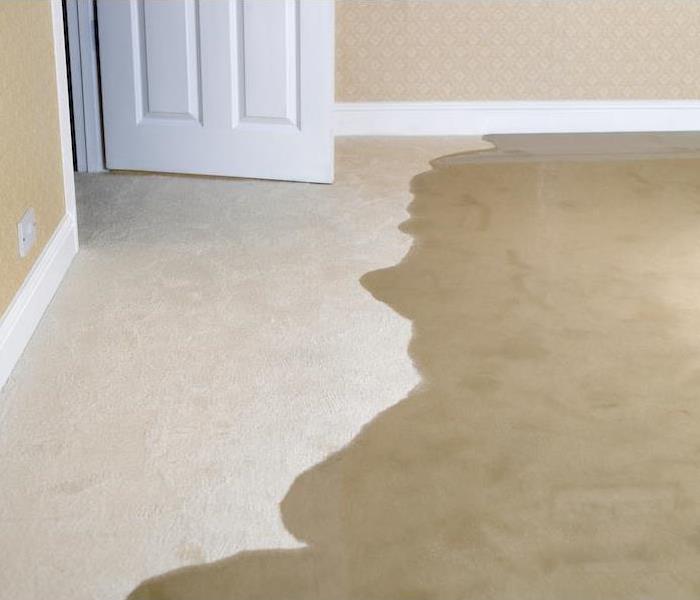What Are the Common Water Restoration Obstacles for Chicago Apartments?
9/16/2020 (Permalink)
Apartments present unique challenges for professional water restoration companies like our SERVPRO team.
With so many apartments throughout Chicago, having an effective strategy for water restoration in these residences is something that our SERVPRO team needs. While many of the restoration and recovery equipment and tools are the same between smaller units and large commercial structures like warehouses and hospitals, there are enough differences where thorough evaluations of the damaged areas by our project manager are necessary. These assessments ensure the right tools and products make it to the damaged sites.
Water damage in your Chicago apartment is challenging, especially when the conditions are severe enough to require relocation. Because you are responsible for securing the restoration professionals necessary to recover this damage, you can depend on our technicians' fast response when you call. This situation differs from commercial damage or house flooding, and so we must prepare for variances in:
- Total Area Affected
- Sensitive Materials
- Water Migration
- Microbial Threats
How Widespread Are Water Disasters?
Perhaps one of the most significant variances to apartment water losses versus larger residences or commercial properties is the total area affected. A single loss incident could spread throughout the entire open floor plan of an apartment without much resistance, providing a much larger restoration area for our professionals responding to the emergency. Also, with many of the apartment buildings throughout the city several stories high, damages to upper floor units require unique extraction and drying solutions suitable for high-rise structures. For example, high-pressure pumps can help remove standing water over considerable distances when proper drainage is not possible in the unit.
What Materials Experience the Most Direct Damages?
While this is not the case for all apartment buildings in the city, not all of these structures were constructed with the highest quality materials. In many cases, these complexes get built with fixtures and materials that are quickly interchangeable when apartment units exchange hands and renovations and reconstruction is necessary to put the property back on the market for sale. Several specific materials and fixtures are often the hardest hit by standing water or oversaturation, based mostly on the length of exposure or these structural elements' porosity:
- Engineered Wood – Many of the kitchen areas have been built with engineered wood flooring, which provides an improved aesthetic over linoleum, but a higher porosity and absorption rate.
- Wood Trim – The trim and baseboards are often the first materials in a wall system to directly contact standing water over prolonged periods. Usually, the exposure of these elements requires these trim sections to get removed entirely and later replaced.
- Drywall – Sheetrock and gypsum wallboard is highly porous and quickly absorbs moisture and standing water. This material's composition allows for wicking up the wall surface, affecting a much larger area than the actual depth of standing water concerns.
- Glue-Down Carpet – In spaces like bedrooms and the living room area, glue-down carpet is a low-cost flooring option. When this becomes wet, it is possible to remove moisture with carpet wands and air movers unless deterioration or mold growth has begun.
- Cabinetry – Kitchen fixture damage can lead to water disasters, and this can also directly impact elements like countertops and cabinets. Evaluating these fixtures can show when replacement is more advisable over restoration and drying.
Can Water Damage Impact Other Units?
Water movement to adjacent units can be more of a challenge than you might initially believe, especially in structures with limited materials in structural cavities. Pathways from your damaged apartment to new areas that might also require restoration and recovery include:
- Wall Systems
- Flooring
- Ceiling
Is Mold Likely for Chicago Apartments?
Mold is a hazardous situation that can develop after water damages exist. Even with efficient water removal and drying solutions, microbial threats can develop in as little as 48 hours. Evaluating the likelihood of these microbial threats for exposed materials during restoration can protect surfaces from facilitating this organism with mold inhibitors or show where remediation practices are necessary to restore the property. In many cases, the presence of fungal colonies can coincide with materials that required controlled demolition already, which can provide an efficient start to remediation of the apartment needs.
Owning an apartment in the city is a common situation for thousands of residents, but these units can become more damaged when water disasters occur than single-family houses might. Whatever your residence needs in an emergency, you can count on our SERVPRO of Hyde Park / E. Bridgeport / Bronzeville team to help. Give us a call today at (312) 509-5000.






 24/7 Emergency Service
24/7 Emergency Service